CCD Cameras
Venuslab ExView U3 Camera
Covers conventional bright field, low-light field, and fluorescence light field microscopic observation
- Adopts Sony ExView HAD CCD chip
- Supports a maximum exposure time of 1 hour
- USB 3.0 (5Gbps) high-speed interface
- Integrated CNC aluminum alloy housing
- Multi-platform SDK (Windows/Linux/macOS/Android)
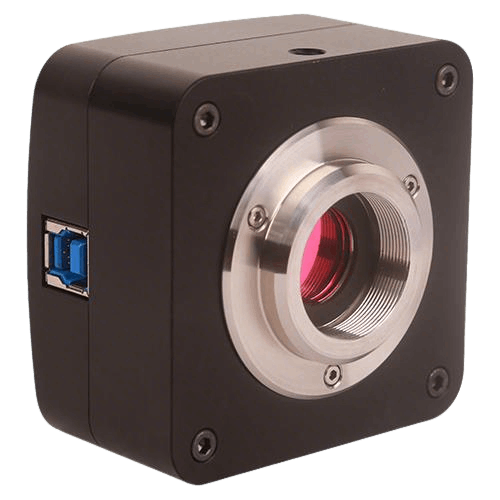
Venuslab ExView U3 Camera
3.6 FPS @ 4248×2836 (full resolution) and 3.6 FPS @ 2124×1418 (2× binning), with an exposure range of 0.06ms to 1000s (ultra-long integration).
Dark current is optimized for 420nm shortwave light, delivering 12.2mV low noise at 1/30s exposure, and is compatible with blue-violet fluorescence labeling (e.g., DAPI staining).
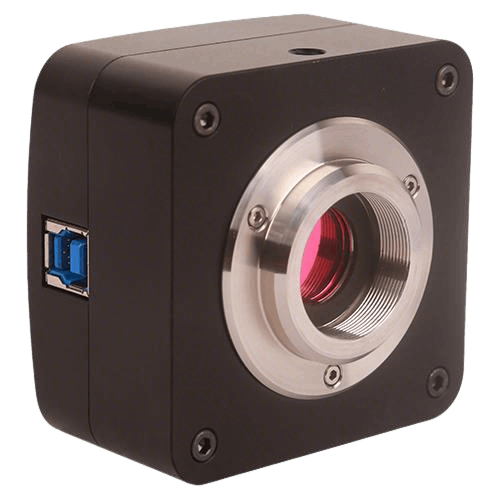
Venuslab ExView U3 Camera
Dark current covers 580nm (1/30s, 12mV) + 660nm (F8.0), suitable for green fluorescence (such as GFP, around 580nm) and red light labeling.
4.4FPS@3388×2712 (full resolution), 4.4FPS@1694×1356 (×2 downsampling), exposure 0.06ms~1000s.

Venuslab ExView U3 Camera
The dark current is based on 660nm (1/30s, 12mV, F8.0), which is more suitable for red/far-red fluorescence (such as Cy5, around 660nm).
The frame rate and exposure are consistent with KPA, and the core difference lies in red light spectrum optimization.

Venuslab ExView U3 Camera
The dark current is based on 660nm (1/30s, 12mV, F8.0), which is more suitable for red/far-red fluorescence (such as Cy5, around 660nm).
The frame rate and exposure are consistent with KPA, and the core difference lies in red light spectrum optimization.

Venuslab ExView U3 Camera
Dark current covers 880nm near-infrared (1/30s, 8mV low noise), suitable for near-infrared fluorescence imaging (such as Cy5.5, 800~900nm).
7.5FPS@2748×2200 (full resolution), 14FPS@2748×1092 (×2 downsampling for speedup), exposure 0.06ms~1000s.
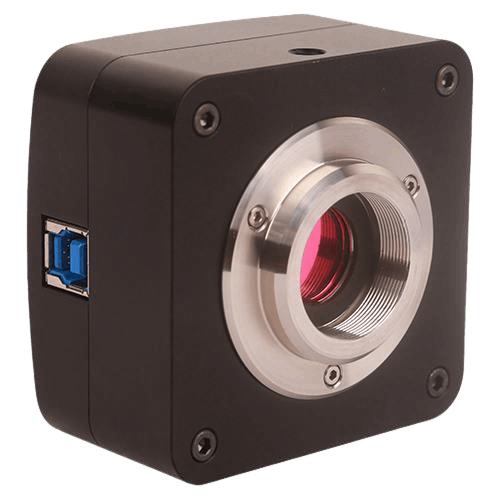
Venuslab ExView U3 Camera
Dark current extends to 1000nm deep infrared (1/30s, 8mV), covering 200nm more than KPA, and is suitable for deeper infrared imaging (such as tissue penetration observation).
15FPS@2748×1092 (1FPS faster than KPA), with consistent frame rate across all resolutions.
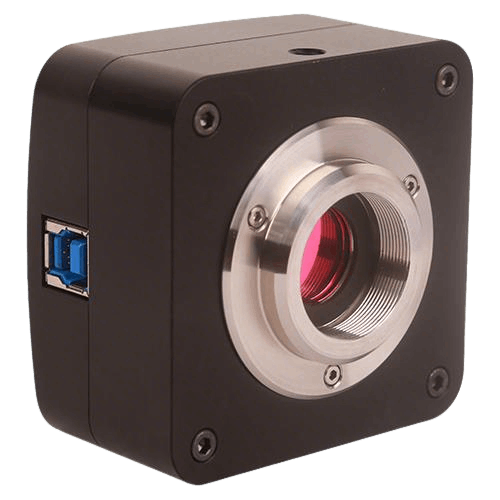
Venuslab ExView U3 Camera
Spectral Advantage: Dark current covers 800nm near-infrared (1/30s, 4mV ultra-low noise), suitable for multi-spectral fast imaging.
Multi-frame Rate Modes: 15FPS@1938×1460, 17FPS@1610×1212, 18FPS@1930×1092, meeting the flexible switching of "speed - resolution", with exposure ranging from 0.05ms to 1000s (faster startup).

Venuslab ExView U3 Camera
Dark current covers 950nm deep infrared (1/30s, 4mV), which is 150nm more than KPA, making it suitable for near-infrared deep tissue observation.
The frame rate is exactly the same as KPA, and the core difference lies in the infrared response upper limit (950nm vs 800nm).

Venuslab ExView U3 Camera
Spectral Breakthrough: Dark current covers 2000nm extremely long-wave infrared (1/30s, 4.8mV), suitable for special infrared microscopy (such as material thermal imaging, near-infrared penetration of biological tissues).
High-Speed Mode: 25FPS@1376×1040 (single resolution, focusing on high-speed imaging), exposure 0.07ms~1000s (balancing speed and integration).
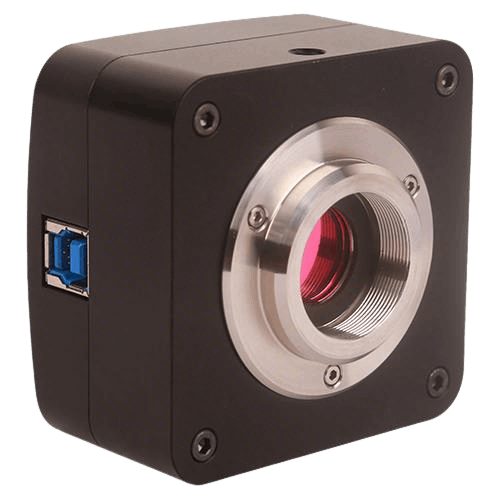
Venuslab ExView U3 Camera
The dark current parameters are identical to those of the KPB (2000nm, 4.8mV). This represents a sensor version iteration (AA vs. AL), with a focus on algorithm optimization (e.g., noise suppression).
The frame rate and exposure parameters remain fully consistent, and it is targeted at customized infrared scenarios.
Venuslab ExView MTR3 Camera
High-end imaging equipment dedicated to scientific research and precision testing
- Dual-stage semiconductor deep refrigeration technology
- High-sensitivity and low-noise architecture
- High-speed interface and full-scenario compatibility
- Industrial-grade durable design
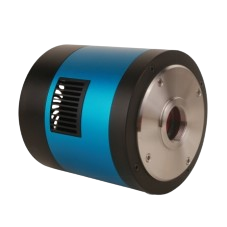
Venuslab ExView MTR3 Camera
Advantages:
High pixel count, large-sized sensor, strong long-exposure capability, suitable for capturing detailed images that require long exposure.
Applications:
Astronomical photography (such as long-exposure shots of nebulae), microscopic imaging in scientific research that requires high resolution and long exposure.

Venuslab ExView MTR3 Camera
Advantages:
It features high pixels, long exposure, and the sensor may have optimizations in aspects such as low noise.
Applications:
It can be used in scientific research or industrial inspection that have special requirements for sensor performance.

Venuslab ExView MTR3 Camera
Advantages:
Moderate pixels, high G sensitivity, low dark signal, and good imaging quality.
Applications:
Industrial inspection (such as appearance inspection of electronic components), biomedical imaging (such as cell observation).
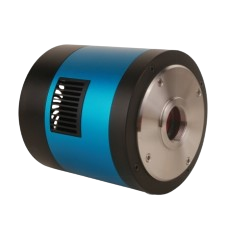
Venuslab ExView MTR3 Camera
Advantages:
Moderate pixels, G sensitivity is higher than that of KPA models with the same pixels, low dark signal, and brighter imaging.
Applications:
Scenarios such as industrial inspection and security monitoring in low-light environments.
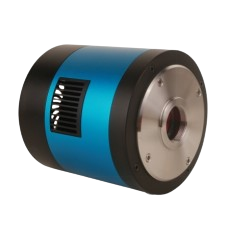
Venuslab ExView MTR3 Camera
Advantages:
Large pixels, high G sensitivity, low dark signal, suitable for low-light imaging.
Applications:
Low-light industrial inspection, medical imaging (such as endoscopic imaging).
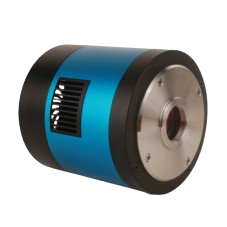
Venuslab ExView MTR3 Camera
Advantages:
Large pixels, high G sensitivity, low dark signal, and strong low-light imaging capability.
Applications:
Scientific research imaging in low-light environments, industrial inspection, etc.

Venuslab ExView MTR3 Camera
Advantages:
Large-size sensor, large pixels, high G sensitivity, low dark signal, and good imaging quality.
Applications:
High-end industrial inspection (such as semiconductor inspection), scientific research microscopic imaging.
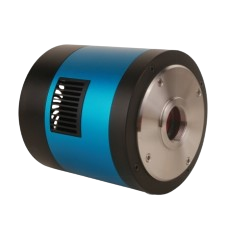
Venuslab ExView MTR3 Camera
Advantages:
Large-size sensor, large pixels, high G sensitivity, low dark signal, and excellent low-light imaging performance.
Applications:
Can be used in scenarios with high requirements for low-light imaging.

Venuslab ExView MTR3 Camera
Advantages:
Large pixels, high G sensitivity, low dark signal, and excellent low-light imaging capability.
Applications:
Imaging in extremely low-light environments, such as night vision and astronomical dark field imaging.
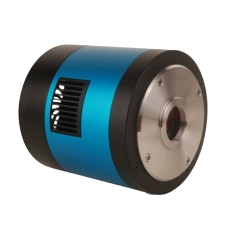
Venuslab ExView MTR3 Camera
Advantages:
Large pixels, high G sensitivity, low dark signal, and excellent low-light imaging performance.
Applications:
Suitable for extremely low-light scenarios.

Venuslab ExView MTR3 Camera
Advantages:
Large pixels, extremely high G sensitivity, low dark signal, and extremely strong low-light imaging capability.
Applications:
Special scenarios with extremely high requirements for low-light imaging, such as extremely weak light astronomical observation, underground cave imaging, etc.
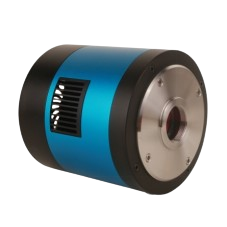
Venuslab ExView MTR3 Camera
Advantages:
Large pixels, extremely high G sensitivity, low dark signal, and top-notch low-light imaging performance.
Applications:
Used in extremely weak light imaging scenarios.
Venuslab ExView EX Camera
Cost-effective low-light imaging and basic detection equipment
- Excellent low-light capturing capability
- Strong general usability
- Combining adaptability and durability
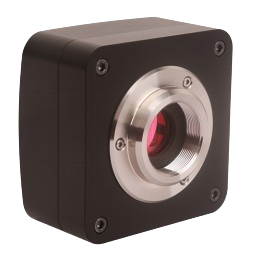
Venuslab ExView EX Camera
Advantages:
The pixel size is relatively large, which gives it certain advantages in light-sensing performance, enabling it to capture more light in low-light environments; the frame rate performs stably at low pixels, and the long exposure time can meet the needs of specific scenarios.
Applications:
Suitable for industrial inspection in low-light environments, such as defect detection of auto parts; also can be used for shooting some faint celestial bodies in astrophotography, and cell observation that requires low-light imaging in the biomedical field.
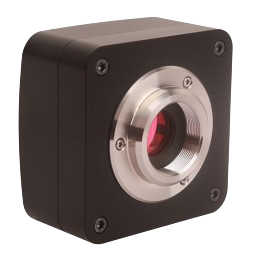
Venuslab ExView EX Camera
Advantages:
Among products with the same pixel count, G has higher sensitivity, enabling it to better capture weak light and achieve better low-light imaging effects; it also features a large pixel size, resulting in excellent light-sensing performance.
Applications:
It is suitable for scientific research scenarios with higher requirements for low-light imaging quality, such as observing biological samples under a fluorescence microscope; it can also be used for shooting night scenes in security monitoring.
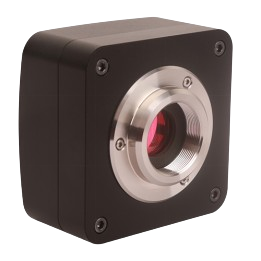
Venuslab ExView EX Camera
Advantages:
It has a relatively large pixel size and extremely strong light-sensing capability, showing obvious advantages in imaging under extremely weak light environments; the frame rate is relatively high, which can be used to capture some dynamic scenes.
Applications:
Suitable for monitoring in extremely low-light environments, such as underground parking lots, tunnels, etc.; also applicable to some scientific research experiments that have low requirements for dynamic capture but strict requirements for low-light imaging, such as deep-sea biological observation.
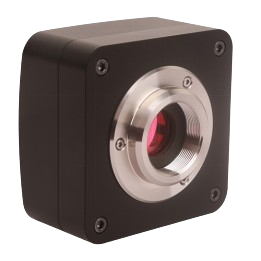
Venuslab ExView EX Camera
Advantages:
High frame rate, capable of quickly capturing dynamic images, suitable for shooting fast-moving objects; at low pixels, the circuit processing is relatively simple, which may result in lower noise and better stability.
Applications:
Can be used for the detection of fast-moving components on industrial production lines, such as food packaging inspection; also can be used for some simple monitoring in sports events to capture the fast movements of athletes.

